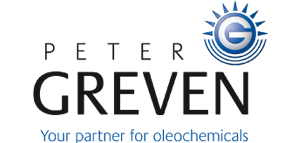
Considering Scope 3 Emissions
As part of our climate protection strategy, we focus on reducing direct emissions that occur at our site (Scope 1) and indirect emissions resulting from purchased energy (Scope 2). We have the greatest direct influence over these two areas and can develop and implement targeted measures immediately.
However, it is important to emphasize that Scope 3 emissions – emissions occurring along the upstream and downstream value chain – typically account for the majority of the overall CO₂ balance in many manufacturing companies. This also applies to us at Peter Greven. Since they are crucial for a comprehensive assessment of our environmental footprint, the transparency and management of these indirect emissions are becoming increasingly important.
Currently, we are particularly focusing on the upstream supply chain. We are systematically working to better capture and understand the CO₂ footprint of our raw materials. To create a solid data base for emission assessment, we require our suppliers to provide reliable data on their carbon footprints. This information is essential for planning and implementing measures for emissions reduction.
Based on this data, we are pursuing concrete approaches to reduce Scope 3 emissions. One example is the selection of sustainably certified raw materials, such as RSPO certified palm products. This choice not only helps us achieve our environmental goals but also supports responsible farming practices that are both ecologically and socially sustainable.
Collaboration with our suppliers and partners throughout the entire supply chain is a key element. Together, we strive to identify efficiency potentials and minimize emissions. We believe that only through close cooperation and open dialogue with our partners can a significant reduction in emissions be achieved. In this way, we shape a more sustainable future together and reduce our ecological footprint.


